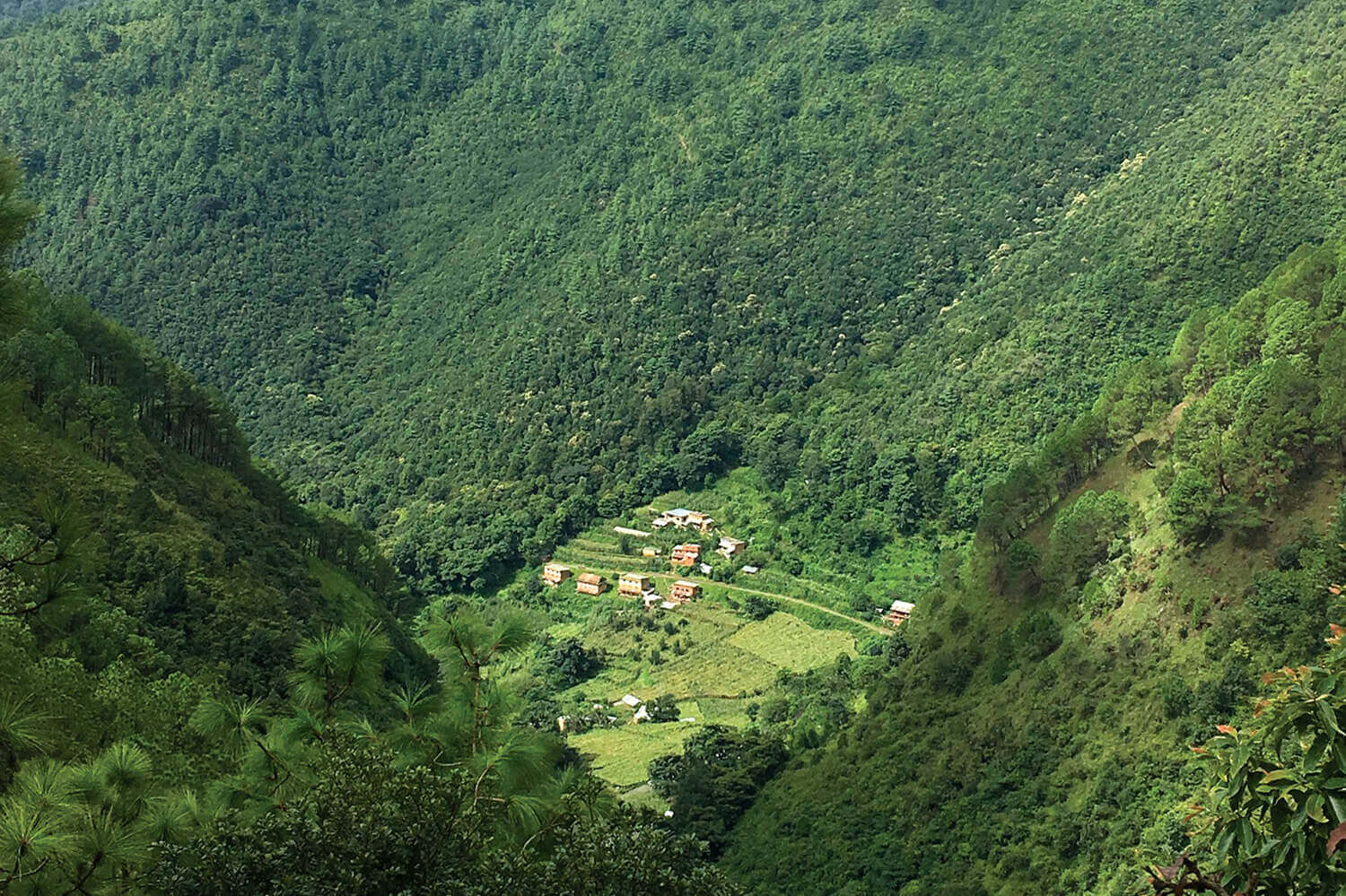Will Nepal ever be paid for saving trees?

Last week, the Nepal government signed a carbon trading agreement with the Lowering Emissions by Accelerating Forest Finance (LEAF) Coalition under which the country would stand to earn Rs36 billion in the next four years for protecting its forests.
The figure ‘Rs36 billion’ made headlines in Nepal, and there was widespread expectation that the country would finally be compensated for doubling its forest cover in the past 40 years, and for setting aside 26% of its area for nature reserves.
However, it does not seem to be as simple as that.
“Whether Nepal will ever get the money for expanding its carbon sink, and how much we will be paid is not certain,” says Buddha Poudel of the Ministry of Environment and Forests. “And then there is the question of whether Nepal will be able to fulfil its commitment to expand our forest cover further. It is not enough to talk at the UNFCCC, it needs a lot more work.”
Nepal made the commitment to the UNFCCC (United Nations Framework Convention on Climate Change) at the COP26 Climate Summit in Glasgow on 2 November. LEAF brings together 17 members, including the United States, Britain, Norway as well as 20 private companies who have pledged $1 billion for forest conservation.
Industrialised countries and large corporations are under pressure in Glasgow to show that they are not just cutting down on their own emissions, but supporting forest expansion around the world to make up for their historical emissions.
LEAF is the mechanism with which they hope to support forestry activities in low income countries. Among its private sector members are Delta Airlines, Walmart, BlackRock, AirBnB, Amazon, Nestle, Unilever, Salesforce, Bayer, Burberry, EY, Inditex, Intertek.
The LEAF initiative was among a series of agreements signed in Glasgow last week to protect forests worldwide, including theWorld Leaders Summit Action on Forests & Land Use agreed to by 130 world leaders. Other initiatives included a pledge by 12 countries pledged to provide $12 billion of public climate finance from 2021 to 2025 to a new Global Forest Finance Pledge. There was $3 billion more pledged for protecting the Congo basin and forest-dwelling indigenous groups.
The funding countries hope that this carbon trading mechanism will make up for their high per capita emissions by paying to protect carbon sinks in tropical forests around the world. The UNFCCC set up the Reducing Emissions from Deforestation and Degradation (REDD) mechanism ever since COP3 and under the Kyoto Protocol.
Under the Clean Development Mechanism (CDM) Nepal benefited from funding for hydropower, improved wood burning stoves, biogas and other projects.
Nepal first joined REDD+ in 2009, and in 2020 signed a multi-million dollar contract with the World Bank to sell nine million metric tonnes of carbon reserves at $5 per ton.
But carbon trade is a long and winding process. According to Paudel at Environemnt Ministry, to get the payment as agreed, by 2022 Nepal has to carry out seven activities and confirm that the emissions from the forest area (13 districts in the Terai, western Nepal and Bagmati province) have reduced and carbon reserves have increased compared to 2018.
But the forest areas of Bara, Parsa, Nawalparasi, Rupandehi, Kapilvastu and Kailali, which have been contracted with the World Bank for carbon trading, are seeing rampant encroachment and deforestation with no efforts deployed to stop them.
The forest area is shrinking further due to the indiscriminate construction of infrastructure by the local and state governments, as well as private contractors.
“There is now an increasing trend of using forest land for development projects with an approval from the federal government, this has increased encroachment and made it more difficult to stop deforestation,” says Sindhu Dhungana, former head of the REDD+ Implementation Centre.
He adds: "Whether we get money or not is a different matter, but the activities we do to get money will help in our forest conservation."
On the other hand, parts of Nepal saw a seven-month winter drought followed by unprecedented forest fires that burned for more than three months earlier this year. These wildfires contribute largely to the carbon footprint and are increasing every year, adding to the challenge of reducing emissions from the forest areas.
Nepal as one of the countries most impacted by the climate crisis ought to be a role model to the rest of the world by reducing emissions from the forests and increase the carbon reserves but it is looking unlikely by the passing minute.
Nepal’s community forest program has won international praise for restoring the country’s tree cover but the management of the forests under the new federal structure threatens to undermine past gains. As such, the Environment Ministry has recommended handing over the forests once again to the community for their sustainable management.
Similarly, 30,000 hectares of the new forest should be developed across the country by planting trees on public, vacant or private land. Nepal has also agreed to manage 10,000 hectares of pro-poor forest, distribute 120,000 improved stoves to replace burning firewood, use forest area based on land use policy and reduce carbon emissions by preventing wildfires.
Our officials signed the letter of intent with the LEAF Coalition but there is no roadmap on how to proceed or which steps to take. Which is why it is premature for Nepal to expect any money without concrete measures to reduce our emissions further.




